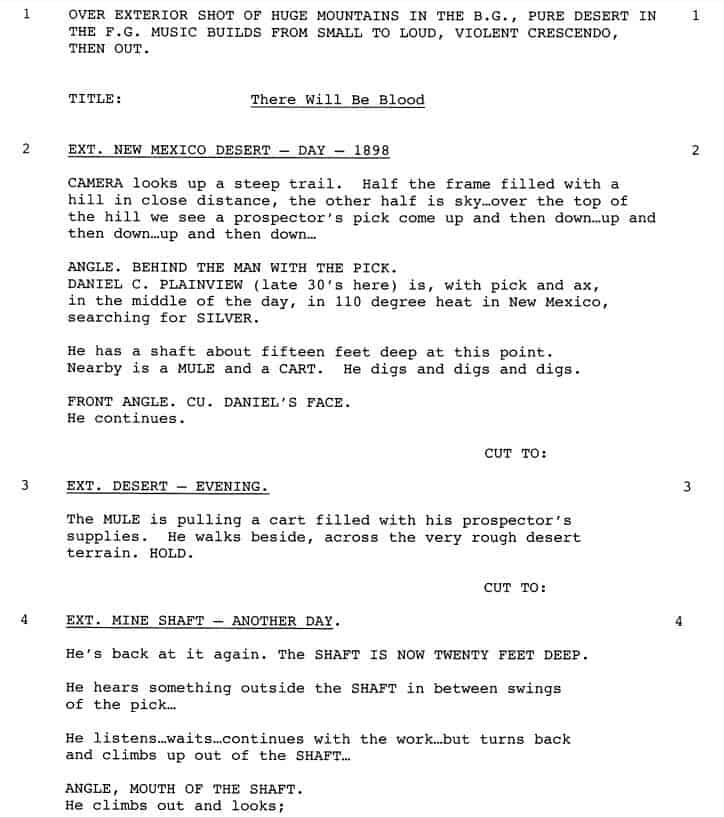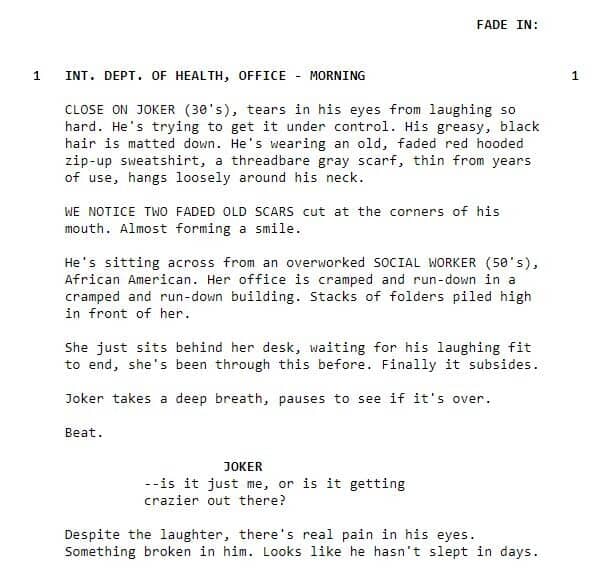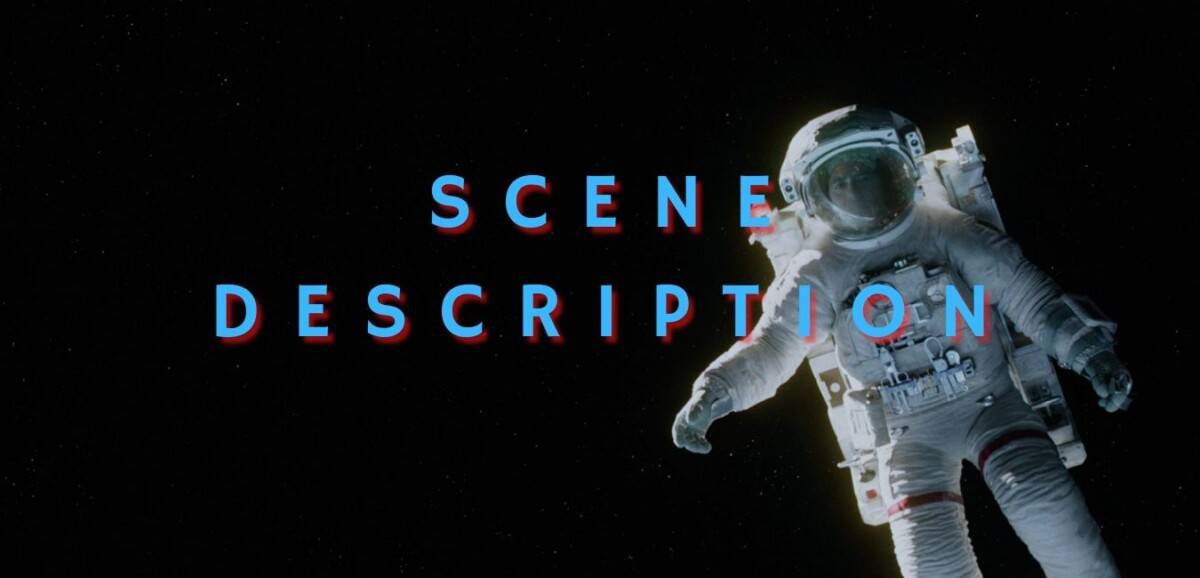When I first started writing screenplays, I was told, your scene description is the lifeblood of your script. It’s more important than other aspects of your script, such as dialogue—words given from people like Aaron sworkin and David Mamet.
What’s the Purpose of Scene Descriptions?
What’s the purpose of scene description in screenplays? The purpose of scene description is to inform the reader of the location to set the scene in the reader’s head.
It puts a clear image of what’s happening in the reader’s head.
Example:

Everything you need to know about a character and not a word was spoken.
How to Write a Scene Description in a Screenplay?
How do you write scene descriptions in a screenplay? You write scene descriptions in a script by explaining the location, action of the character, and the characteristics of the people of that scene in the most visual way possible.
Example:
INT. DORM ROOM - NIGHT
John sits sharply on his candy wrapper-filled desk, typing away at his computer. His eyes beam with focus. He glances at the computer clock.
INSERT - Computer Clock "11:52 PM."
His phone vibrates. He jumps up and hustles a pile of clothes off the bed. He finds his cracked screen iPhone.
All three elements, shown in five lines.
Tips for Writing Scene Descriptions in a Screenplay
We now know what elements are involved in a scene description.
Let’s talk about what we shouldn’t do in the form of tips. Below are seven tips to make your scene description explode off the page.
1.) Sound effects are CAPS
When something happens that’s worthy of a sound effect, make sure it’s all caps. Doing this pops it off the page and wakes the reader up. Lower casing sound effects can result in a reader glancing over it and not noticing.
Example:
The doorbell RINGS.
2.) Stay away from adjectives
This wouldn’t be a thing if we were writing a novel, but this is a script. Adjectives are extra words or fluff that can make a short sentence longer than it needs to be.
But there are still more precise ways of describing things.
Example:
Stay away from this:
An old man
Write this:
A man in his 70s
3.) Stay away from adverbs
Adverbs also slow down the pace of the screenplay. You have to get to the point when writing. If they read your script at all, most producers have very little time, so save their time by getting to it.
Example:
Stay away from this:
He gently lays her down.
Write this:
He lays her down.
4.) Don’t use camera direction
Close-ups, zooms, dollys, wide shots. They are all not needed unless you’re getting paid to write a production-ready script. It’s bad practice to write them.
You can direct the camera with an image alone.
Example:
Don’t write this:
CU of a man dying. WE SEE in his hand a gun.
Write this:
A dying man in his last moments shelters a gun.
5.) Write action, not static images
Action images refer to things in motion. Static images are things not moving. A screenplay is a written movie, not a written painting.
Example:
Don’t write this:
John stands in the room, shocked.
Write this:
John shakes with fear.
More on this in an article I wrote on emotion here.
6.) No generic sentences
Generic is a term thrown around a lot in screenwriting and is a mark of an amateur. Above all else, you are a writer, not just a screenwriter. You’re writing needs to stand out.
What is generic writing? Writing that doesn’t pop with an image to the reader.
Example:
Don’t write:
He sits. He stands.
Write this:
He slumps down. He rises to attention.
7.) Write less (1-3 sentences)
Unless this is the most crucial part of your script, generally, you’re going to write less. Compacting your description is a mark of a good screenwriter. If you can say everything in three sentences, great. If you can say it in one, fantastic.
Example:
Stay away from this:
John throws his computer up against the wall. He punches a hole through his mirror. He starts to cry.
Write this:
John, in a ball of rage, a single tear falls.
If you need more than three sentences, it’s essential to break it into two paragraphs instead of having one big chunk of text.
Scene Description Template
For most major scene descriptions, we need to answer six questions in the least number of words as possible.
Example:
INT. JOHN'S BEDROOM - DAY
John's room is messy. We see john on his bed. He's reading a comic eating food.
Example:
INT. JOHN'S ROOM - DAY
John flips through his new comics while stuffing Cheetos in his mouth. Without a care in the world.
This is what send, and third drafts are for, but you can spit out a decent version once you get good without having to do a second pass on it.
Take a look at John August fix someone’s scene description.
Different Types of Scene Description in Screenplays
Opening scene
This is where you set the scene in a script—so no matter what, choose your words very carefully.
Let’s look at some examples of good opening scenes.

This is from the joker script.
From mission impossible.
First time in a scene and the second time in a scene
Now let’s talk about the description difference between the first time you enter a location and the second time.
Conclusion
Scene description can be complicated, but here, I’ve done my best to simplify it. Please, when writing your scene descriptions, if you take anything away from this post. Think action.
The number one problem people have with scene descriptions is what your describing isn’t visually appealing. Writing with action verbs is the easiest way to fix that.
Now its time to hear from you:
Did I miss anything?
Give me an example of how you will write your descriptions. How is it different from what I’m describing?
Whatever your answers are, let’s hear it in the comments below.
Happy Writing.

